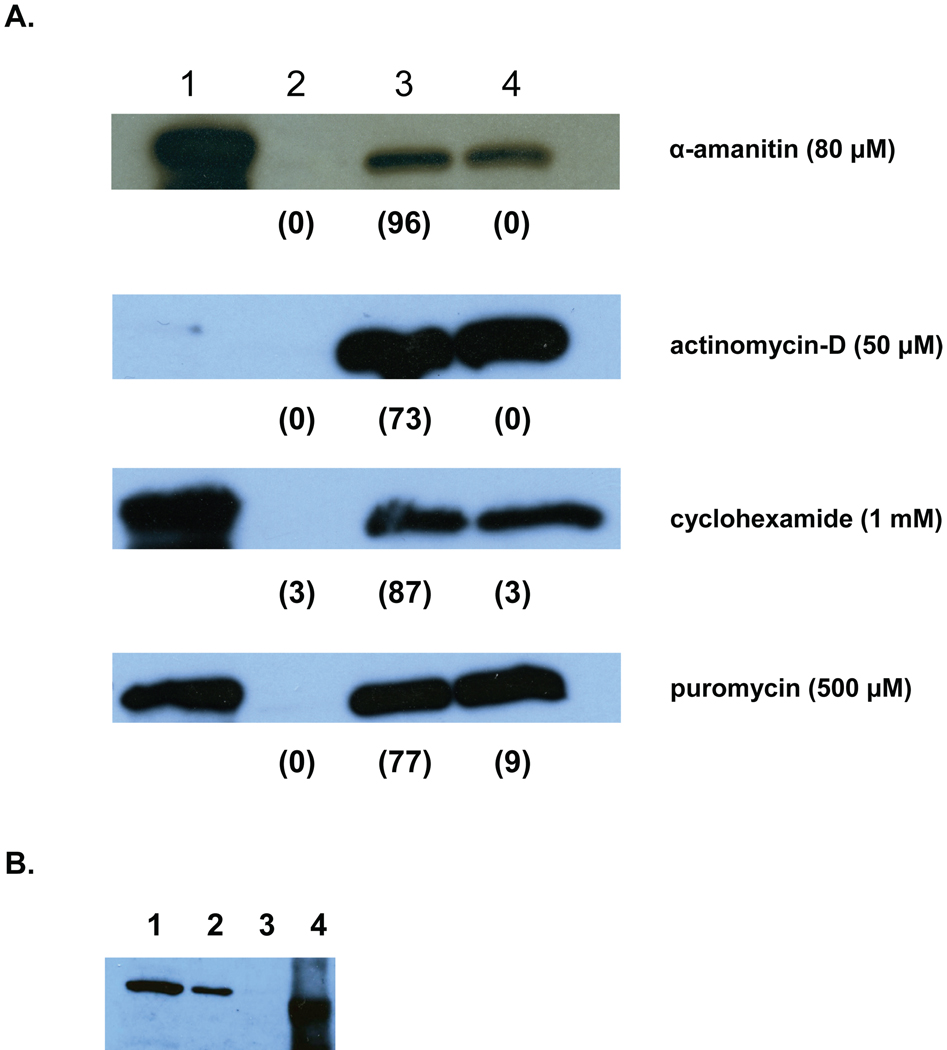Figure 4.
Effect of RNA and protein synthesis inhibitors on secretion of ASP-1 during activation. A. Approximately 5000 A.caninum L3 were incubated without filtrate and GSM (non-activated), with filtrate and GSM (activated), or with filtrate and GSM and inhibitor at the indicated concentration (inhibited). After 24 h, the ES products were collected and separated by SDS-PAGE, blotted, and probed with ASP-1 antiserum. Lane 1, rASP-1; lane 2, non-activated L3 ES; lane 3, activated L3 ES; Lane 4, inhibited L3 ES. The numbers in parentheses indicate percentage feeding at 24 h. The lack of signal in the positive control for actinomycin D was due to inadvertent omission of the control sample from the gel. B. ASP-1 is synthesized prior to activation. Soluble extract of untreated A. caninum L3 were separated by SDS-PAGE, blotted, and probed with ASP-1 antiserum. Lane 1, 4 µg lysate; lane 2, 1 µg lysate; lane 3, 0.1 µg lysate; lane 4, 5 µg recombinant ASP-1.

